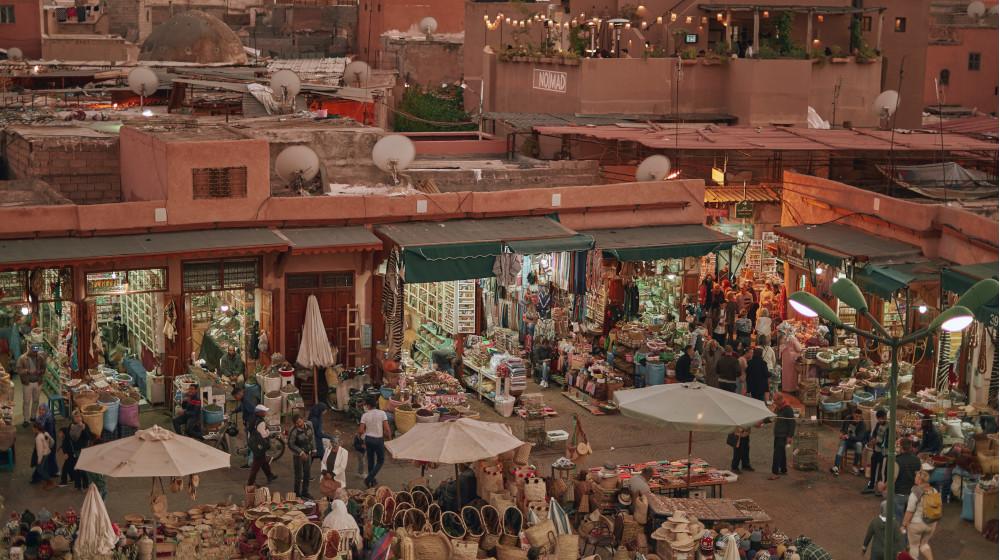In the Middle East, "a region of some 400 million people", nearly 65% of the population is under the age of 30. Some argue that the tipping point for social media in the region was the youth-led “Arab Spring” in 2011. Whether true or not, Arab social media has taken the Middle East and North Africa (MENA) by storm, changing its communication landscape. The adoption of new communications preferences has also led the younger Arab generations to uncover new avenues to start their own business or projects. A digital world of new opportunities.
There are now more than 100 million Arab social media users in the MENA region and around 320 million mobile phone subscriptions.
All these factors combined together have affected and will continue to affect internet usage in MENA. The change in Arab social media is fast and dynamic, and as next gen entrepreneurs are busy drumming up their digital ideas. Some more traditional small businesses are struggling to keep up with new social media trends. Below we’ve highlighted some of the most popular Arab social media channels and their latest user stats. This will help you plan your 2019 digital strategy.
Smartphone penetration in Arab social media
Although smartphone ownership in the region – at just under 50% of mobile connections –. This is below the global average of 53%, the number of smartphone connections has doubled in the past three years.
At a market level, smartphone penetration in the UAE is close to 200 per cent, one of the highest rates in the world, with Saudi following close behind at 88%. Despite having the largest population, Egypt is still in the infancy of mobile adoption with 25.8 % of smartphone penetration reported in 2018 .
As users are now viewing the web more on mobile devices rather than on computers. So when it comes to digital you need to think mobile first. First and foremost, is your website mobile compatible? If yes, is your website and digital content easily consumable on mobile devices?
To be able to tap into the populations mentioned above, being mobile means monitoring image sizes, usage of videos and ensuring that your content is relevant enough to your audience. You want to stand out and have your potential customers engage with your blog, video or click-through to your webpage.
The most popular Arab social media channel, based on usage, is WhatsApp. The reach of the popular messaging application in (67%) was just ahead of Facebook (63%) and YouTube (50%) taking it from the status of “just another messaging application” to a social network in its own right.
As the biggest social network, WhatsApp has 95% reach in the United Arab Emirates and 88% in Saudi Arabia. In Egypt, three of out of every four individuals used WhatsApp in 2017 .
As mentioned, WhatsApp is not only used as a messaging app anymore; you’ll find users treating it as a social media platform. You’re probably a member of at least 3 WhatsApp groups, watching WhatsApp Stories if not posting some yourself. You may even subscribe to a news channel and get your daily news insights from WhatsApp. So, take a look at the opportunities it may have for your business, and get messaging.

Since 2012, Facebook has solidified its stronghold in the MENA region with 264% growth in its user base. Egypt remains in the lead with the largest number of active Facebook users: 17 million. But, in terms of total population, Egypt still had massive growth and therefore marketing potential for brands.
Most recently, Facebook completed its five years in the MENA, and opened its doors a brand-new regional HQ in Dubai. This move allowed more brands and businesses to drive awareness and consideration in the region and globally, for those brands with an eye beyond the region. One of the key benefits of Facebook is the platform’s mobile-first strategy. It has over 156 million MENA users accessing the network on mobile devices per month.
Despite a growth in user base, actual usage of Facebook has been on the decline. The research from Northwestern University in Qatar estimating a -20% drop in active Facebook usage in the region. So, while Facebook still has a broad user base and sophisticated targeting tools. The key is to understand where your target audience spends the majority of its time online is crucial to developing the right marketing channel and platform mix.
Twitter expansion
Twitter, is expanding in the MENA region as it registers significant growth in online video consumption, especially in Saudi Arabia. It is often seen as a medium where audience prefer to receive breaking news and engage in socio-politically relevant conversations.
Saudi Arabia, in fact, is the largest market in the region and the only MENA country to feature in Twitter’s list of its top 10 best-performing global markets.
Some argue that Twitter is widely popular due to internet penetration rates or mobile phone access. While others might claim that it’s due to the freedom of expression that this channel allows them. Either way, Twitter is a good platform to start and drive a conversation, or share insights that people may find valuable. So, if you are a blogger, influencer or a brand that wants to start a conversation, it may be the right platform for you and your target audience.
Another added benefit of Twitter is the “Twitter Lite” mobile app that runs at a much faster speed with less data consumption that its original counterpart. Released in 45 countries across the world in mid-2018. Many North African Twitter users benefit from lower data usage and quicker load times, making it easier to engage on this network.
The rise of Instagram
There are 63 million Instagram users in the MENA region, equivalent to 10% of total global users. That means 1 in every 10 Instagram users comes from MENA. What a massive opportunity for not only regional but also global players targeting the region.
Usage of the network is a source of “good news for businesses in MENA” says Jonathan Labin, Managing Director of Facebook Middle East. “We know that more than 70% of Instagrammers follow a business. Moreover, 75% say that they take action after seeing a post, from visiting a website to searching, shopping or telling a friend.
Instagram’s popularity has also contributed to the rise of and demand for Arab social media influencers. Consequently, businesses are competing over hiring them to help reach a wider audience. Working with renowned, mid-level or even micro-influencers could be a good tactic to try in 2019.
Related: 10 Instagram Stories ideas to engage your retail company’s fans
YouTube
Did you know that half of the Arab youth views YouTube on a daily basis? The rise of YouTube in MENA comes down to one important factor: there are over 100 million Arab youths today. This is highest proportion of youth to adults in the region’s history. And, they are digital.
These Millenials are hungry for content, video content at that. Whether it’s a video of two guys battling it out to be the champion of FIFA World video game. A clip featuring a funky Saudi dance tutorial that went viral, an online community is being fostered on YouTube in these markets.
Saudi Arabia is the leader of the pack, with the largest YouTube per capita consumption. The average 15-24 year old in MENA spends 72 minutes a day watching videos online.
Similar to Instagram, we are seeing a wave of YouTube influencers emerging and brands choose to work with them to engage with consumers through tutorials, ads or unboxing videos.
So, do some research and see if any of these new genres, or just plain ‘ol YouTube advertising works for your digital marketing strategy.
If you’re a business owner, marketing manager or content creator; you need to constantly monitor new Arab social media developments. Awareness of regional trends and preferences is important to tailor your strategy.
You must be ready to think on a global level with a local mindset and keep abreast of changes.





